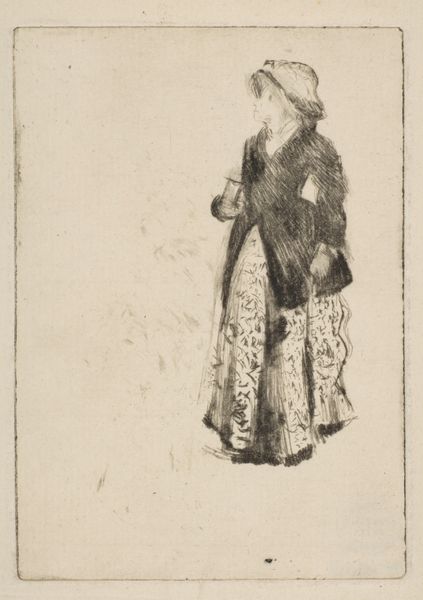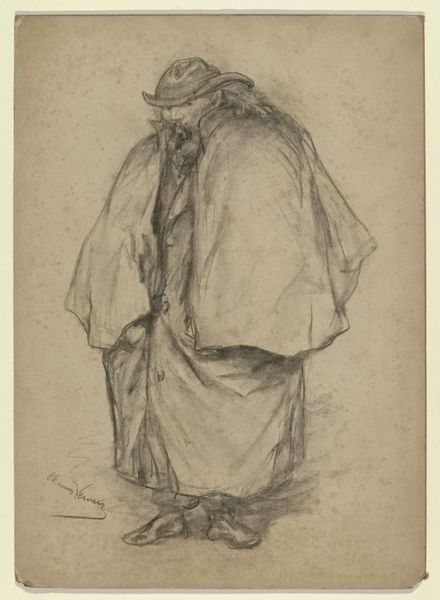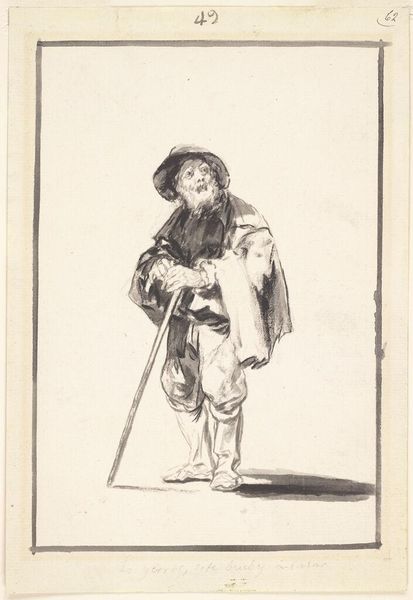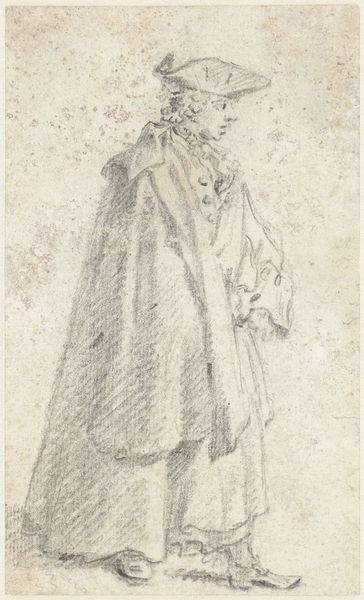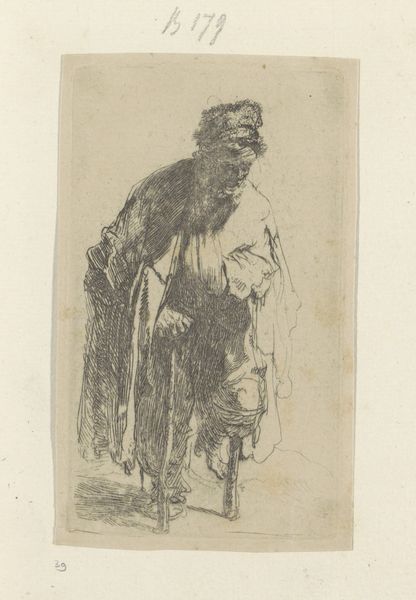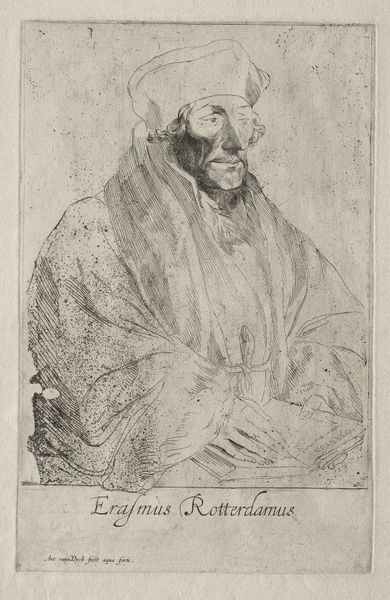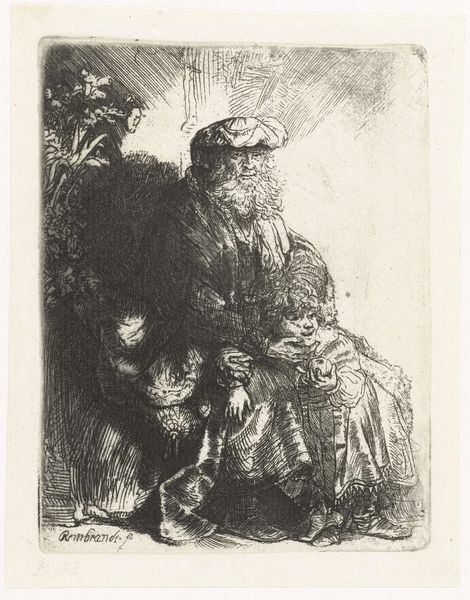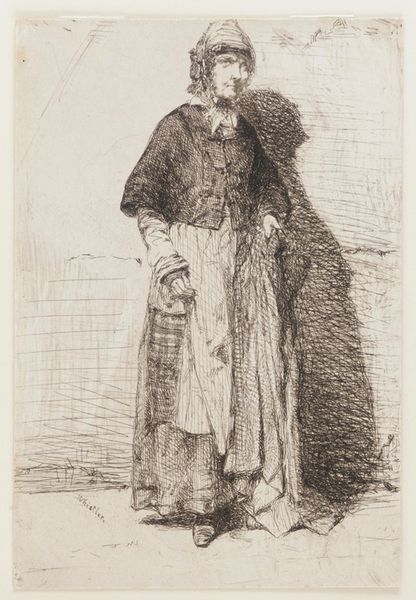
drawing, pencil
#
portrait
#
drawing
#
ink drawing
#
pencil
#
realism
Dimensions: 215 mm (height) x 157 mm (width) (bladmaal)
Curator: This drawing, entitled "Siddende gammel kone," which translates to "Seated Old Woman," was created in 1879 by Viggo Johansen. Art Historian: There's a poignant weariness in this piece. It is rendered simply with a pencil. I'm struck by how quickly it captures the sitter’s form, posture, and downcast gaze. Curator: The hurried quality feels intentional, as if Johansen is striving to capture something ephemeral. It's an act of witnessing. You can see how he used hatching to create tone and depth, really drawing out the detail of her weathered features. It’s a pretty raw and unromantic portrait of aging, and perhaps even hints at societal indifference towards older women. Art Historian: I think you are right; we see that frequently with older female subjects within artistic and broader socio-economic contexts, this lack of clear romantic idealization as she's aging, the way those depictions fall out of the public interest. He made many works depicting domestic scenes, including images of his own family, but he was keen to depict a different picture of that lifestyle with these kinds of studies of individual lives. There are elements here that don't allow for typical narrative scenes that capture family and domestic comfort. This challenges and reframes public sentiment towards everyday life as well as images and scenes centered on families in artistic studies during that time. Curator: Absolutely. There’s an unvarnished truth here. The attention to detail of the woman’s plaid shawl and hat contrasted with the hurried rendering of her facial features could symbolize the emphasis and expectations placed on women’s appearance, over their internal lives, even into older age. What's left unseen feels like a profound act of respect and discretion on the part of Johansen, I think. We are forced to acknowledge her presence without demanding the invasive gaze typical of traditional portraiture. Art Historian: Yes, the portrait refrains from turning the sitter into a mere spectacle. Looking at art, like this drawing, is important to consider its purpose as a product within that moment's larger artistic framework, it's critical that art captures the life it studies authentically, rather than falling into tired historical themes of society's views. The composition and subject matter give value to real everyday moments and people rather than a manufactured theme that feels unrealistic. Curator: A wonderful insight, seeing art as more than decoration but rather documentation, truly. Art Historian: A brief look but plenty to consider!
Comments
No comments
Be the first to comment and join the conversation on the ultimate creative platform.

